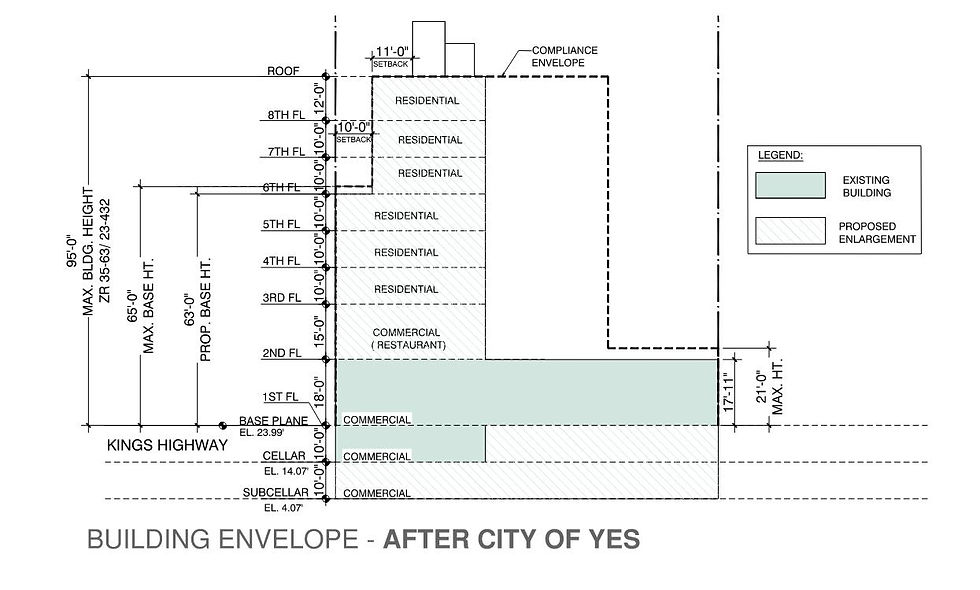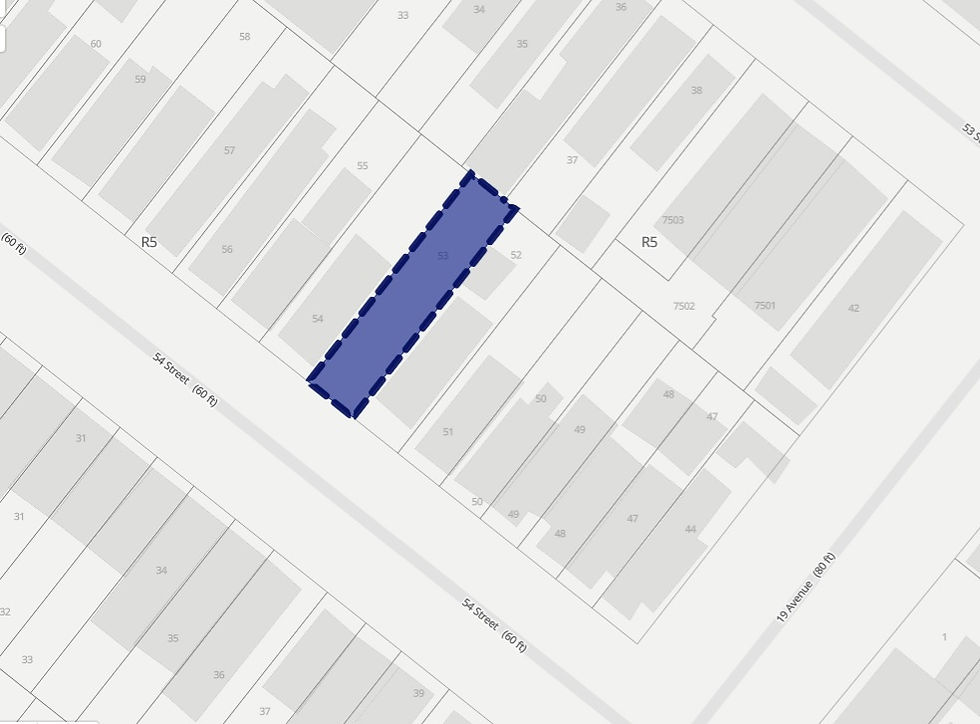3rd Avenue (Rezoning)
- MZA
- Apr 22
- 2 min read
Updated: May 13
Project Overview
Our team played a crucial role in a successful rezoning initiative that involved converting a portion of an existing Manufacturing District (M2-1) into a Commercial District (C4-4A). This strategic zoning change allowed for a dramatic increase in development potential, nearly doubling the size of the project and introducing previously restricted uses, such as retail, office spaces, and residential units.
Key Challenge
The property was originally located within an M2-1 Manufacturing District, which limited both the size and types of allowable uses. The initial zoning only allowed for a Floor Area Ratio (FAR) of 2.0, which significantly constrained the project’s development potential. The desired vision for the property included a much larger building with a mix of commercial and residential spaces—an option that wasn’t feasible under the existing zoning.

Our Solution
We were part of a dedicated team that worked to successfully rezone the property from M2-1 to C4-4A, a Commercial District that permitted a much higher FAR of 4.0. This zoning change allowed the building's size to nearly double, providing a far more valuable and versatile development. With this new designation, we were able to introduce a mix of uses, including retail, office, and residential spaces, which were previously not permitted in the area.
Our extensive knowledge of NYC zoning regulations and experience navigating complex rezoning processes were key to aligning the project’s goals with the broader city planning initiatives.

Outcome
The successful rezoning from M2-1 to C4-4A effectively doubled the development size, significantly increasing the project's potential. By increasing the FAR from 2.0 to 4.0, the development became far more valuable, enabling the introduction of a mix of retail, office, and residential spaces. This zoning change directly contributed to a much higher return on investment for the developer, as the expanded development allowed for greater leasing opportunities, increased revenue potential, and an overall more profitable project. Additionally, the project contributed to the broader economic revitalization of the area, enhancing the neighborhood’s growth and attracting new business and residents.




Comments